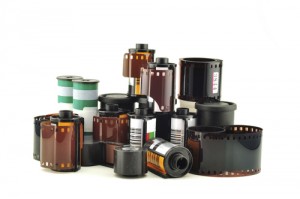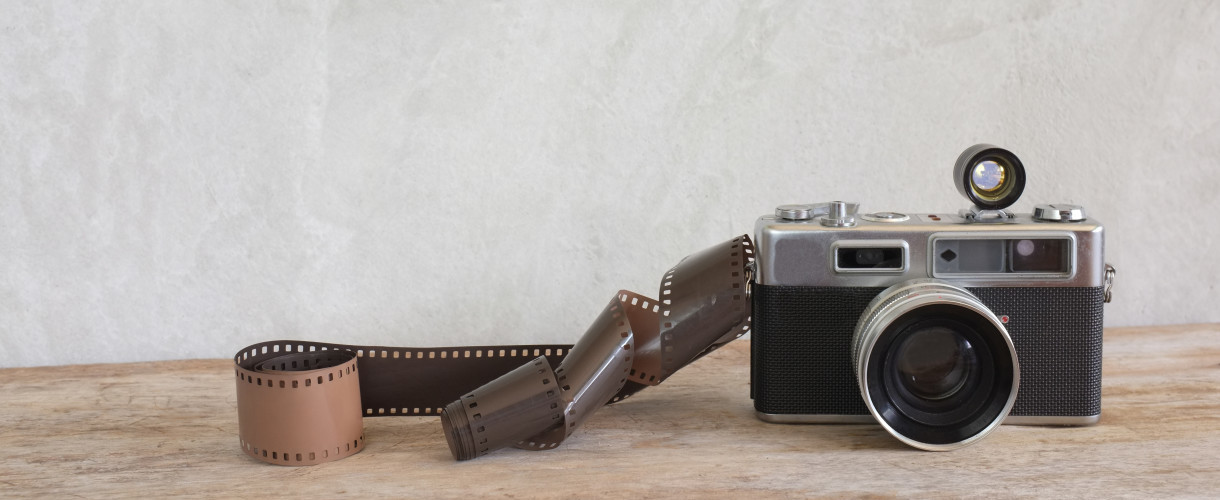Film in Photography
We rarely see film based cameras these days unless in the hands of a photographer intrigued with the old ways, hipsters or those who simply haven’t moved into the digital world. But what is it this classic form of photography has over today’s more widely used and popular digital cameras? And what is it that puts more people off using them?
The way a film camera works…
In its most basic form film cameras work by letting in light for a split second. The time it takes for the shutter to open and close allows natural light in to hit the back of the camera and cause a chemical reaction with light sensitive silver halide crystals which rearrange. Developer is then used which causes any light struck crystals to turn a shade of black, a fixer is then used to remove those crystals which were not exposed,once removed you are left with your negative- a reverse of the picture you took.

The Experience
There’s something truly worthwhile in placing valuable film into a camera that adds to the whole experience of capturing a shot. There’s no denying film photos take a lot more time and work to produce.
The Cost
There’s little doubt digital cameras cost a lot more than film in terms of initial outlay.That said the cost of photographing in film over time does tend to go above that of digital which requires the cost of developing only. Film photography however has the additional cost of film which depending upon the age of the camera can work out extremely expensive as well as potentially batteries and also developing/lab costs, once again dependent upon the age of camera and the type of film.

The Value of a Photo
Thinking along the lines of the cost there is also the time and effort value that comes from photographing in film. As you cannot continually have your finger on the button and take hundreds of shots just to get that one perfect capture, and you cannot check each individual shot as you go along it gives more value and appreciation to when you do achieve that perfect shot.
The Colour & Quality
The thing with film is the camera tends to be more forgiving with focusing and exposure issues, sometimes even allowing ‘mistakes’ to create an extra authentic beauty. Often the grain and also the blending effects you can achieve with film is a look and feel which cannot be replicated with a digital camera which operates in a much more linear way.

Less is Sometimes More
The problem with digital is that with all the different ways of capturing on digital sometimes a photographer can lose his individual style and unique look. Film on the other hand retains its style with each capture, in addition any mistakes in film can actually come across to add more value and character to the print.
The Wait
Something that is lost with digital photography is the time you must wait before actually getting to see your finished work with film. If you don’t have patience this obviously isn’t ideal in particular as you often have no idea how the print will come out. In particular if you are working for someone, getting pictures across to clients from digital is much easier as it is almost immediate.

That Tangible Moment
You take your time looking through the viewfinder to find that perfect shot, and then with a digital capture yes you can see your shot immediately, however with film you can hold that tangible negative in your hand. Then you’re left with your postive and your negatives; proof of your effort and patience.









